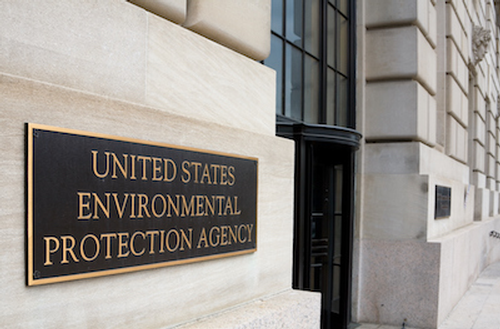THURSDAY, FEBRUARY 8, 2024
At the beginning of the month, the U.S. Environmental Protection Agency revealed new efforts to protect communities and the environment from per- and polyfluoroalkyl substances.
“From day one, President Biden promised to address harmful forever chemicals and other emerging contaminants to better protect communities from exposure, and today’s actions are just the latest from EPA as we continue to deliver on the president’s commitment,” said EPA Administrator Michael S. Regan.
“Thanks to strong partnerships with our co-regulators in the states, we will strengthen our ability to clean up contamination from PFAS, hold polluters accountable and advance public health protections.”
According to the press release, the EPA is proposing to modify the definition of hazardous waste as it applies to cleanups at permitted hazardous waste facilities.
This modification would ensure that the agency’s regulations clearly reflect its’ and authorized states’ authority to require cleanup of the full range of substances that the Resource Conservation and Recovery Act (RCRA) intended.
This includes emerging chemicals of concern, such as PFAS, that may present substantial hazards, at permitted facilities. The EPA explains that, currently, the regulations do not clearly and accurately reflect the full authorities granted to the EPA by Congress.

 |
| © iStock / Skyhobo |
|
At the beginning of the month, the U.S. Environmental Protection Agency revealed new efforts to protect communities and the environment from per- and polyfluoroalkyl substances. |
Additionally, the agency is proposing to amend its RCRA regulations to add multiple PFAS compounds as hazardous constituents. These PFAS would be added to the list of substances identified for consideration in facility assessments and, where necessary, further investigation and cleanup through the corrective action process at hazardous waste treatment, storage and disposal facilities.
The proposal are anticipated to be published in The Federal Register in the next few weeks.
The “Definition of Hazardous Waste Applicable to Corrective Action from Solid Waste Management Units” proposed rule will be open for public comment for 30 days. The “Listing of Specific PFAS as Hazardous Constituents” proposed rule will be open for public comment for 60 days.
Inactive PFAS Rule
Last month, the announced it has finalized a rule to prevent companies from starting or resuming the manufacturing of 329 PFAS substances that have not been made or used for many years. According to the agency’s release, these chemicals are known as “inactive PFAS” and may have been used without review in many industries, including as binding agents and surfactants, and in the production of sealants and gaskets.
When the Toxic Substances Control Act was first enacted in 1976, thousands of chemicals were grandfathered in under the statute and allowed to remain in commerce without additional EPA review.
The EPA explains that during the first 40 years of the law’s existence, the agency completed formal reviews on only about 20% of new chemicals and had no authority to address new chemicals about which the agency lacked sufficient information. This is reportedly part of the reason why many chemicals, including PFAS, were allowed into commerce without a complete review.
Now, under the 2016 TSCA amendments through the bipartisan Frank R. Lautenberg Chemical Safety for the 21st Century Act, the agency must formally review the safety of all new chemicals before they are allowed into commerce.
Under this new significant new use rule (SNUR), the EPA is required to conduct reviews before any of these inactive PFAS could be used again.
The TSCA requires the agency to designate each chemical on the TSCA Inventory as either “active” or “inactive” in commerce. An “inactive” designation means that a chemical substance has not been manufactured (including imported) or processed in the United States since June 21, 2006.
The final rule reportedly applies to all PFAS that are designated as “inactive” on the TSCA Inventory and which are not already subject to a SNUR. The EPA says it has has aligned the rule with reporting requirements for the Active-Inactive rule, which designated these “inactive” chemicals.
However, if a company wants to use any of these 329 chemicals, they are required to notify the EPA first. The agency would then be required to conduct a robust review of health and safety information under the modernized 2016 law to determine if the new use may present unreasonable risk to human health or the environment and put any necessary restrictions in place before the use could restart.
Tagged categories: Coating Materials - Commercial; Construction chemicals; Environmental Protection Agency (EPA); EPA; Good Technical Practice; hazardous materials; Hazardous waste; Health & Safety; Health and safety; Regulations